On June 29, 1509, Margaret Beaufort died. The name may not mean much to everyone but she was the mother of Henry VII and the reason for the Tudors getting on the throne and for the Houses of York and Lancaster to be joined. Her last rites were performed by John Fisher, Bishop of Rochester. It was just four days into Henry VIII’s reign and two months after the death of her son.

The Death of Margaret Beaufort: The Reason for the Tudor Dynasty
Margaret Beaufort was Henry VII's mother and the reason he was able to take the throne. She died on June 29, 1509, just two months after her son's death.
The Early Years of Margaret Beaufort
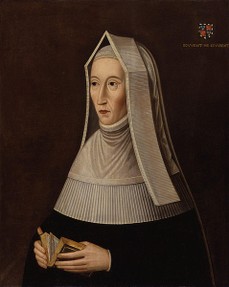 The exact year of Margaret’s birth is disputed but is either 1441 or 1443. However, the day and month is May 31 – she required that Westminster Abbey celebrate that day as her birthday. 1443 is the most likely year. It was this year that her father made negotiations about the wardship of a child with the King in case he was killed in battle.
The exact year of Margaret’s birth is disputed but is either 1441 or 1443. However, the day and month is May 31 – she required that Westminster Abbey celebrate that day as her birthday. 1443 is the most likely year. It was this year that her father made negotiations about the wardship of a child with the King in case he was killed in battle.
Her parents were John Beaufort, 1st Duke of Somerset, and Margaret Beauchamp or Bletsoe. Through her father’s side, she was a direct descendant of Edward III of England, which meant that she did have a link to the throne.
Despite arranging for Margaret’s wardship and marriage being left to his wife, John Beaufort returned from battle in France. However, he had fallen out with the King at that point and was banished from court. He died shortly after this, just before he was charged with treason! The Crowland Chronicle reports that John killed himself although Thomas Basin reports that it was of an illness.
Margaret was left as the heiress to John’s fortunes as the only child. The King decided that her wardship would be left to the 1st Duke of Suffolk, William de la Pole, but she lived with her mother. During this time, her mother was pregnant with a baby that didn’t survive. There were five half-siblings through Margaret’s mother, two boys and three girls, from a previous marraige.
Margaret Beaufort Denied the Throne
In an Act of Parliament in 1397, the children of John of Gaunt and Katherine Swynford were legitimised. This meant that Margaret should have been in line to the throne. However, Henry IV declared that they could never inherit the throne and neither could their descendents. This caused some problems for Henry VII when he finally found himself as King of England.
She was married either three or four times (her first marriage is disputed and possibly just a betrothal and Margaret certainly never recognises the marriage) but she only had one child – Henry Tudor. Henry was the son of Edmund Tudor, who was the half-brother of Henry VI. The marriage to Edmund Tudor was short-lived due to the start of the War of the Roses. Edmund was part of the House of Lancaster and was taken captive by the House of York. He died while in captivity of the plague, never getting to meet his son, the future King of England. She gave birth at the age of 13 and almost died, along with the baby. This is possibly the reason for not having any other children.
Initially living in Wales, Henry was moved to France to live in exile. Margaret stayed in contact with her son through letters and the odd visit. She always respected Edmund and specified that she wanted to buried next to him upon her death. However, her marriage to her third husband, Henry Stafford, was a long and happy one.
The Conspiracy with Elizabeth Woodville
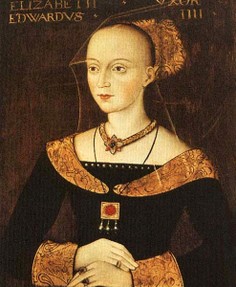 Sometime after 1483, Margaret started conspiring with Elizabeth Woodville, the Dowager Queen. By this point, Richard III was on the throne and Elizabeth’s sons, the legendary Princes in the Tower, had been placed in the Tower of London and were presumed dead. Knowing that her daughter would not become Queen in her own right, Elizabeth agreed with Margaret that her daughter would marry Henry Tudor – her daughter was Elizabeth of York.
Sometime after 1483, Margaret started conspiring with Elizabeth Woodville, the Dowager Queen. By this point, Richard III was on the throne and Elizabeth’s sons, the legendary Princes in the Tower, had been placed in the Tower of London and were presumed dead. Knowing that her daughter would not become Queen in her own right, Elizabeth agreed with Margaret that her daughter would marry Henry Tudor – her daughter was Elizabeth of York.
This all happened thanks for Margaret’s fourth husband, Thomas Stanley, who was conspiring against King Richard III in secret. Thomas remained away from the Battle of Bosworth Field, which took place in 1485, despite his son being Richard’s hostage and when Henry Tudor won, he placed the crown on his head.
In 1487, the Dowager Queen was banished from court, possibly due to Margaret’s influence over her son.
Margaret Beafort Makes a Vow of Chastity
Despite being married, Margaret took a vow of chastity in 1499. The only time this had happened before was in 1413 by Margery Kempe. It was with the permission of Stanley and in the presence of the Bishop of London, Richard FitzJames. She lived on her own after this time but her husband visited her regularly and had his own rooms.
It was because of her son being King that allowed for this. Henry VII allowed his mother to keep lands in her own name, as if she had not married. As the King’s Mother she also got away with other things that other women never could. She only walked half a pace behind her daughter-in-law, Elizabeth of York, the Queen Consort.
Henry VII made his mother chief executor of his will and she arranged his funeral in 1509. She also arranged the coronation of Henry VIII, her grandson, and Catherine of Aragon.
The Cousins' War Series by Philipa Gregory
 |  |  |
| The Kingmaker's Daughter (The Cousins... | The White Princess (Cousins' War) | The White Queen (The Cousins' War) |
 | ||
| The Red Queen: A Novel (The Cousins' ... | ||
The Death and Burial of Margaret Beaufort
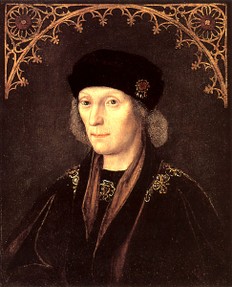 Margaret died the day after Henry VIII’s 18th birthday and not long after his marriage to Catherine of Aragon. She died in Westminster Abbey’s Deanery and was buried in Henry VII Lady Chapel. Her tomb, made of black marble, sits between Mary, Queen of Scots and the Stuart monarchs, William and Mary.
Margaret died the day after Henry VIII’s 18th birthday and not long after his marriage to Catherine of Aragon. She died in Westminster Abbey’s Deanery and was buried in Henry VII Lady Chapel. Her tomb, made of black marble, sits between Mary, Queen of Scots and the Stuart monarchs, William and Mary.
If it wasn’t for Margaret, the Tudors would probably have never made it to the throne. She was also smart enough to realise that she needed the support from Elizabeth Woodville to help keep her son on the throne. The joining of the Houses of York and Lancaster helped to legitimise Henry VII’s position -- although Henry did help himself by executing most of the House of York who could depose him.
You might also like
England Under the Tudors: Would King Edward VI Have Been a Goo...Edward VI reigned between 1547 and 1553 when he was just a boy. It's hard to ...
Lady Jane Boleyn: Vindictive Woman or Pawn in a Plot?Jane Boleyn is known for her part in bringing down the Boleyn faction. How mu...
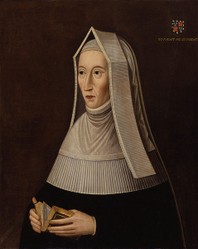





 Alternate History: What If Mary I Had a Child?on 01/26/2015
Alternate History: What If Mary I Had a Child?on 01/26/2015
 Francis II of France Dies: Mary, Queen of Scots Returns Homeon 12/05/2014
Francis II of France Dies: Mary, Queen of Scots Returns Homeon 12/05/2014
 Does Writedge Pay? Payment Proofon 12/03/2014
Does Writedge Pay? Payment Proofon 12/03/2014
 Alternate History: What If Lady Jane Grey Was Not Deposed?on 11/11/2014
Alternate History: What If Lady Jane Grey Was Not Deposed?on 11/11/2014
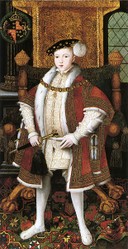
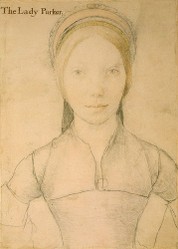
Comments
Oooh! Anne Neville! She's been at the periphery of my suspect list, but I haven't got round to really musing on her yet. She had the opportunity for sure. But Margaret Beaufort had the oppportunity AND the motivation.
It breaks my heart to contemplate Margaret Beaufort's early life especially. Far from home and pregnant at twelve! Plus that horrible experience of labour, which nearly killed her and Henry. Poor kid.
She's fascinating to me too because of the amount she went through. It's not been until researching her for this article that I realised she went through so much. I've never really thought of Margaret Beaufort connected to the Princes in the Tower. My suspicion regularly falls on Anne Neville -- she was the Kingmaker's daughter after all.
Lady Margaret Beaufort is absolutely fascinating me at the moment. Mostly because I'm wondering what she knew about the death of the Princes in the Tower and/or if she did it.
Great article!